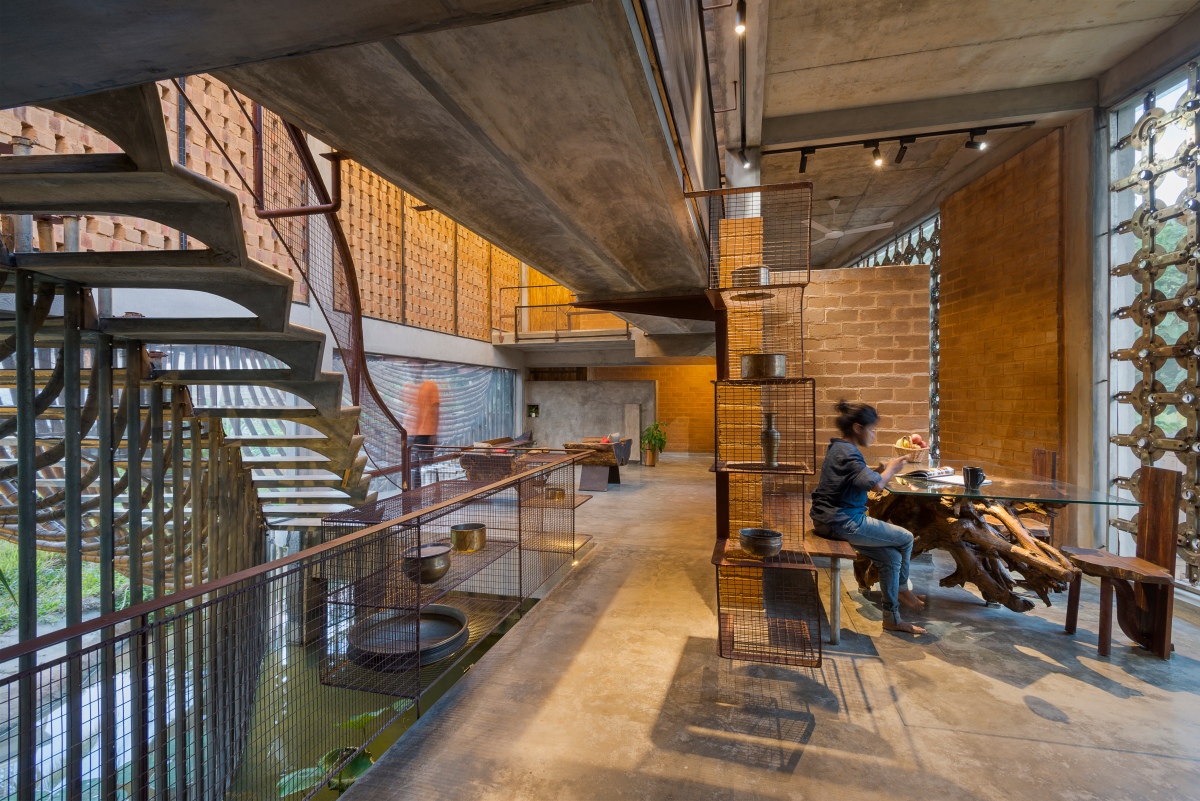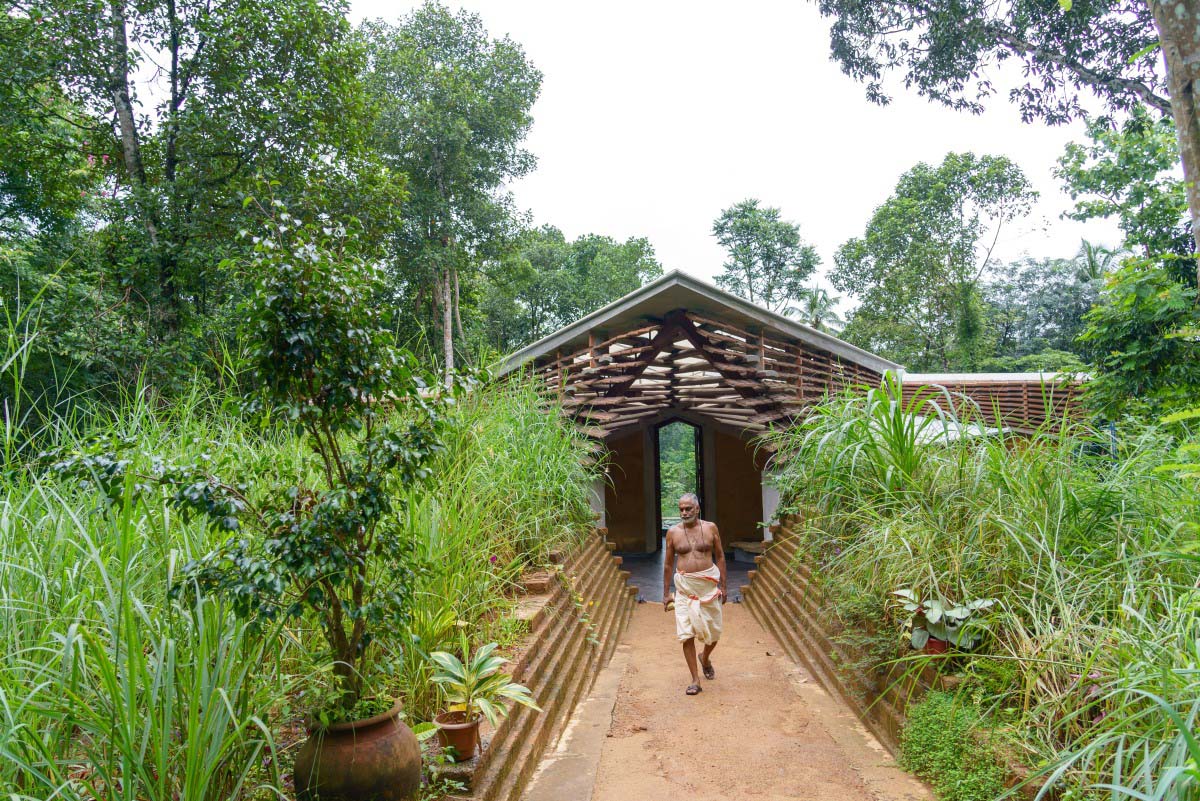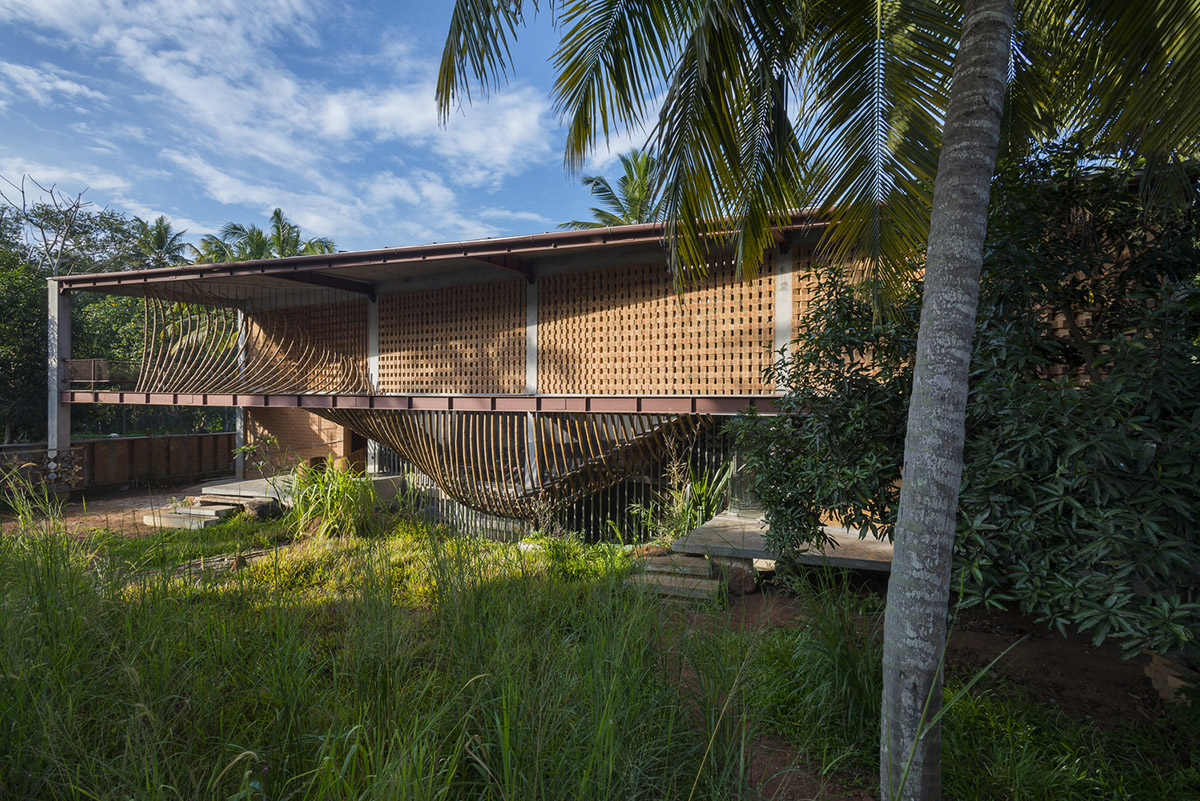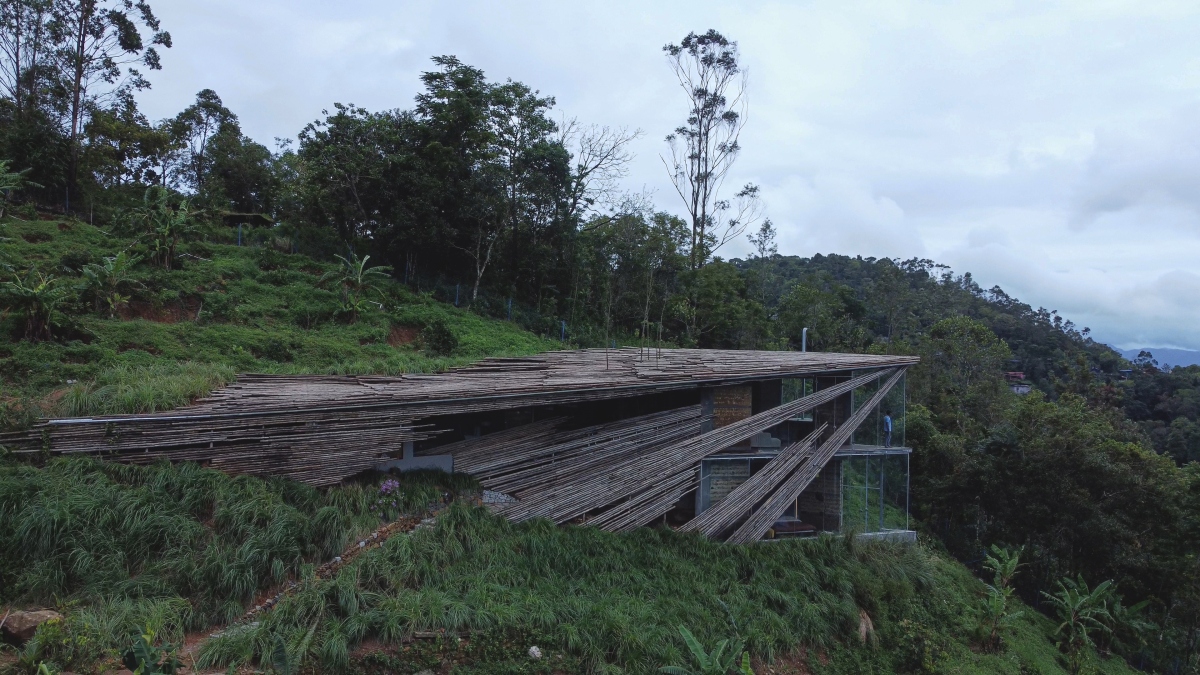Submitted by Pranati Satti
"We must give back to the site" says Wallmakers founder Vinu Daniel
India Architecture News - Nov 13, 2022 - 22:27 3605 views

In a rapidly urbanizing, ever-evolving world, it is increasingly difficult to remain true to our roots and values, consciously preserve the environment, understand materials better, and simultaneously contribute to architecture.
"From a very young age, I was ready to sacrifice my comforts in Abu Dhabi for better air, water and quality of life in Kerala," says Vinu Daniel, founder of the award-winning practice, Wallmakers.
The firm and its team operate directly from sites, and as we spoke, he was on a plantation two hours from Bangalore. "Office spaces don't motivate us. We are rejuvenated by what we see accomplished and are always on-site," he added.
Wallmakers, founded in 2007, is focused on minimizing carbon footprint by designing buildings as efficiently as possible. The practice is site-centric and specific in design, construction and materials, with most materials sourced directly from the site. They recently won the Royal Academy Dorfman Award 2022 in recognition of their innovative use of materials and sensitivity to local context and climate.
While speaking about conserving sites, Daniel says, "Flora and fauna must take over the exterior of every building; we own just the interior. No matter how little we can do to protect the organisms inhabiting a site, we must."

Interior of IHA Residence. Image © Anand Jaju, courtesy of Wallmakers
Vinu Daniel spoke further about his practice, ideologies, philosophy, eco-friendly techniques, sustainability and the profession to WAC's India Country Reporter Pranati Satti. Read the full transcript of the interview below:
Pranati Satti: In what ways does your practice reflect your philosophy?
Vinu Daniel: The studio's philosophy stems from being positive in these apocalyptic times when the quality of our life has degenerated to such an extent. I was born in UAE and would look forward to our yearly vacations to Kerala. Though I was a whiny kid, I admired the beauty, simplicity and purity of life in Kerala. I noticed that the children who grew up here had access to purer air, higher immunity and a better quality of life. As soon as I joined architecture, I immediately regretted it since the course focused on skyscrapers and large buildings, and I knew how disabled I felt living in a city.
Pranati Satti: I read your firm operates directly on-site - how does that work?
Vinu Daniel: Right now, I am in a remote location two hours from Bangalore, surrounded by plantations, and as we speak, we're setting up the internet. Productivity lags in an office environment - you're comfortable and aren't actively visualizing the product. Office spaces don't motivate us (the team). We're rejuvenated by what we see accomplished and are always on-site. Architects in my team can't sit idle on site because vendors and masons will ask them questions. He becomes responsible, as opposed to working in an office, where he's only answerable to a senior architect.

Chirath Residence. Image © Jino Sam, courtesy of Wallmakers
Pranati Satti: What made you get into eco-friendly architecture? You have a distinct style in each of your designs. How do you accomplish this?
Vinu Daniel: When I was unimpressed by architecture - I met Laurie Baker at a competition and was invited to his house Hamlet. During those three or four hours, I began to believe there was a way. After that, I studied mud architecture in Auroville and developed my aesthetic sensibilities. Sustainable architects generally follow an eclectic sense and trivialize design. For me, design is paramount. The place you live in should enchant you. What is different in every project is the site is the god, and the design is our interpretation of the site.

IHA Residence is located in Trivandrum, India in 2018. Image © Anand Jaju
Pranati Satti: You believe design is a slow process. How is it to operate on your own timeline when everything around you moves so quickly?
Vinu Daniel: It's okay to do half a step at a time - it's even okay to do one-tenth. It's better not to build rather than contribute poorly designed buildings, and it's okay to take time. Understanding the value of the material is the essence of architecture. Every blade of grass is valuable- take your time and pray before cutting it. We're answerable to every organism on site. No matter how little we can do to protect them, we must.
When I was working on mud buildings, my brother once complained about a rare spider that would only survive on mud bricks and not on painted surfaces. It took me a while to realize what I perceived as a flaw in my architecture was its strength. Flora and fauna must take over the exterior of every building; we own just the interior, making it as safe as possible. We must give back to the site.
(Shortened for brevity)
 The Ledge, Image © Syam Sreesylam, courtesy of Wallmakers
The Ledge, Image © Syam Sreesylam, courtesy of Wallmakers
Top Image: The Ledge © Syam Sreesylam, courtesy of Wallmakers.
Eco-friendly architecture sustainable architecture Vinu Daniel Vinu Daniel Dorfman Award Wallmakers Wallmakers India
